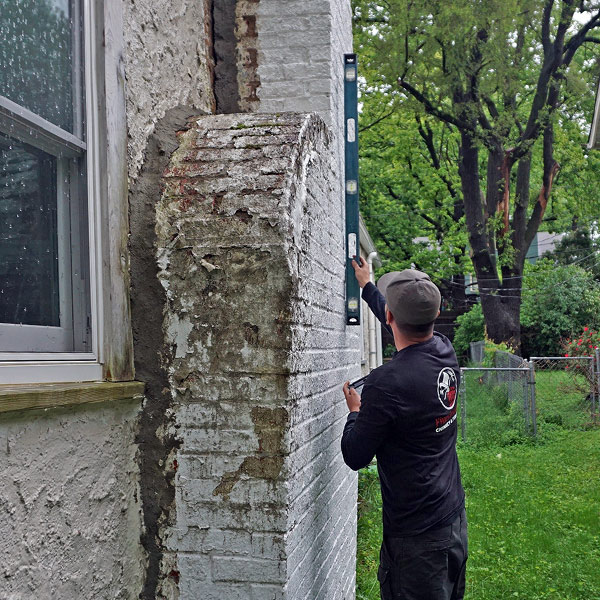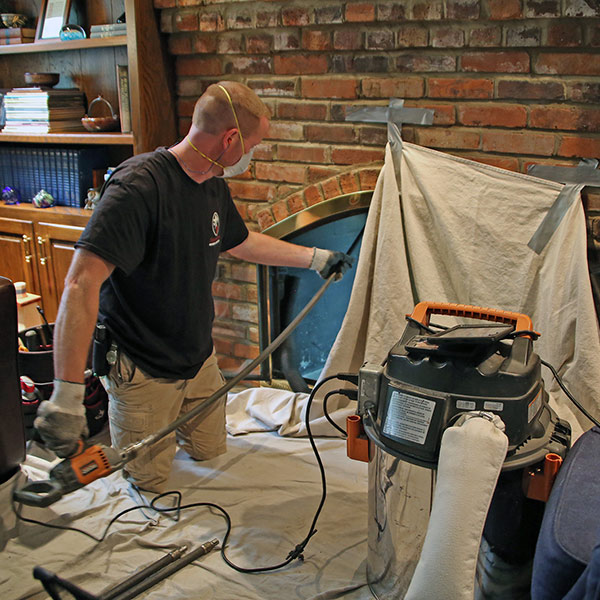What do I do if my chimney is blocked?
A chimney is designed to safely and effectively remove the dangerous fire byproducts produced within the fireplace out of the home. When it becomes clogged, it can no longer perform this important role. While the initial inconveniences resulting from a blocked chimney may seem minor, when left unaddressed, it can lead to many more dangerous problems including fire, carbon monoxide poisoning and toxic fumes. If you suspect your chimney is blocked, it is worth the effort to have it checked out by a professional.
Why It Happens
Blocked chimneys occur for a number of reasons. Often the culprit is a bird or other critter that enters the chimney. They bring with them nesting material that amasses inside the flue. A hefty buildup of creosote – a natural byproduct of the burning process – can also accumulate and fill the flue. Lastly, large amounts of leaves, twigs and other debris can enter the flue and get stuck inside.
Warning Signs of a Blocked Chimney
A blocked chimney may be hard to diagnose on your own but there are some telltale signs to watch for. These warning signs include:
- A smoky smell when burning a fire
- Falling debris inside the hearth
- Water streaks inside the flue
- Excessive soot
- White residue on the flue walls
How to Fix It
Clearing a blocked chimney is a job best left for a professional. They have the tools necessary to reach and remove the debris clogging the flue. How quickly and easily the chimney is cleared will depend on how compact the blockage is. To prevent clogs in the future, an annual chimney cleaning is recommended. Regular cleanings will keep your flue clear while also warning you of any potential problems before they turn into costly repairs. Installing a chimney cap onto the flue can also help limit the number of clogs your chimney experiences. Stopping debris from entering the system in the first place, caps can provide a proactive approach to chimney maintenance.
If you suspect a blocked chimney, contact the team at Lindemann for assistance. We diagnose and treat common chimney ailments both large and small. From an annual cleaning to a complete chimney rebuild, our technicians have the right tools and experience to get your system back into proper working order.

 A wood-burning fireplace isn’t always the best option for homeowners. For some, a gas fireplace is a far better choice. But what if your Chicago home already has a wood fireplace installed? Is a gas fireplace conversion possible?
A wood-burning fireplace isn’t always the best option for homeowners. For some, a gas fireplace is a far better choice. But what if your Chicago home already has a wood fireplace installed? Is a gas fireplace conversion possible?
 Fire Hazards
Fire Hazards Masonry Destruction
Masonry Destruction
 Whether the seller or you as the buyer arranges it, the chimney must be inspected. In fact, in most jurisdictions, it is the law. The inspection should be done by a CSIA-certified (Chimney Safety Institute of America) technician, not a common home inspector.
Whether the seller or you as the buyer arranges it, the chimney must be inspected. In fact, in most jurisdictions, it is the law. The inspection should be done by a CSIA-certified (Chimney Safety Institute of America) technician, not a common home inspector. A poorly drafting chimney can make fires hard to start and maintain. It also can send smoke back into the house. Carbon monoxide, which is present in varying amounts in combustion smoke, can be fatal to humans and pets. Certified chimney sweeps have the tools and equipment to clean your chimney thoroughly and prevent excess creosote and air-flow problems.
A poorly drafting chimney can make fires hard to start and maintain. It also can send smoke back into the house. Carbon monoxide, which is present in varying amounts in combustion smoke, can be fatal to humans and pets. Certified chimney sweeps have the tools and equipment to clean your chimney thoroughly and prevent excess creosote and air-flow problems.